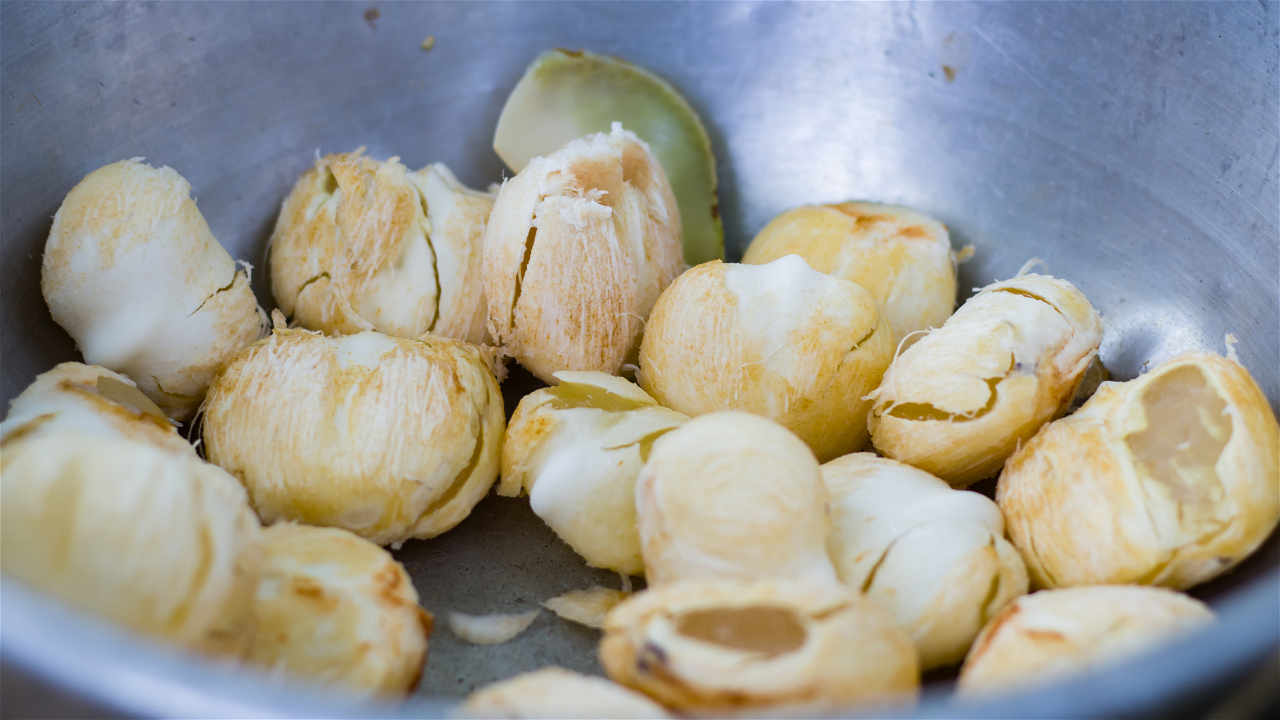
Palmyrah palm (Borassus flabellifer L.), also known as Ice Apple belongs to the Arecaceae family and is a versatile and underutilized palm tree native to tropical Africa and widely distributed across South and Southeast Asia, including India. Palm fruit, rich in vitamins B and C, iron, zinc, and potassium, offers numerous health benefits. It aids in treating skin conditions like prickly heat and inflammation, supports digestive health, and serves as a nutritious option for diets. Additionally, its anti-inflammatory properties make it effective against various ailments. In India, it thrives naturally in states such as Tamil Nadu, Andhra Pradesh, Odisha, West Bengal, Bihar, Karnataka, Gujarat, and Maharashtra. Recognized as the state tree of Tamil Nadu, it is a symbol of resilience and sustainability in agriculture.
Let’s delve into the intricacies of cultivating this valuable palm, covering various aspects from its origin to harvesting and uses.
Soil and Climate Requirements
-
Palmyrah palm is adaptable to various soil types but prefers deep sandy or loamy soils.
-
It can grow in both tropical and subtropical climates, thriving in regions with an annual rainfall ranging from 300 to 750 mm.
-
The palm tree can tolerate arid conditions and marginal soils, making it suitable for cultivation in diverse agro-climatic zones.
Sowing Time and Propagation
-
Propagation of Palmyrah palm is primarily through seeds, ideally sown during the monsoon season (July-September).
-
Ripe fruits from mature palms are selected for seed collection. Seeds are soaked in carbendazim solution to enhance germination and reduce disease incidence.
Nutrition Requirements
-
Nutrient management is crucial for the growth and yield of Palmyrah palm. Organic practices involving farmyard manure (FYM) application are recommended, with initial FYM of 10 kg per pit before planting.
-
Increasing FYM up to 60 kg per tree annually is advised to maintain soil fertility and enhance productivity.
Cultivation Practices
-
Palmyrah palm seeds are sown directly in pits or raised in nurseries, ensuring a spacing of about 3 meters between palms when transplanted, accommodating approximately 1,110 palms per hectare.
-
The palm requires minimal care once established. Regular pruning, especially during the fruiting season, promotes sap flow and fruit development.
-
Intercropping with groundnut, cowpea, or vegetables is common to optimize land use and generate additional income.
-
The palm benefits from low sunlight and can grow up to 30 meters in height.
Irrigation and Management
-
After establishment, Palmyrah palm needs periodic irrigation between 15-20 days interval, especially during dry spells.
-
Drought-tolerant once mature, it responds well to monsoon rains and requires little supplemental water.
-
Mulching with dried leaves helps retain soil moisture and protects seedlings from extreme temperatures.
Flowering and Fruitification
-
Palmyrah palm is dioecious, bearing male and female flowers on separate trees. Flowering peaks between April and May, with fruits maturing within 120-130 days after pollination.
-
The spherical fruits, weighing 1-3 kg, turn from green to dark purple or black when ripe. Tapping for sap (neera) occurs just before flower buds open, yielding about 110-130 liters per palm annually.
Varieties
-
Research on the variety development of Palmyrah palm is limited. Most planting involves location-specific elite palms.
-
SVPR-1, selected in 1992 from Srivilliputhur, is semi-tall with a tapping duration of up to 95 days. It thrives across Tamil Nadu, yielding 298 liters of padaneer per tree annually, with high jaggery recovery (144 g/litre).
-
Local fruits include black-skinned and red-skinned varieties, differing in pigment distribution on their skin.
Plant Protection
-
Common pests of Palmyrah palm include the rhinoceros beetle, red palm weevil, and bud rot caused by Phytophthora palmivora fungi.
-
Integrated pest management strategies involving biological controls and cultural practices are recommended to mitigate pest and disease risks sustainably.
Harvesting and Uses
-
Harvesting of Palmyrah palm involves cutting mature inflorescences for sap extraction and collecting ripe fruits.
-
The sap, known as neera, is fermented into toddy or used fresh as a nutritious beverage.
-
The fruits are consumed fresh or processed into jaggery, sugar, and culinary delicacies.
-
Leaves are valued for crafts, while the trunk finds applications in construction and handicrafts.
















